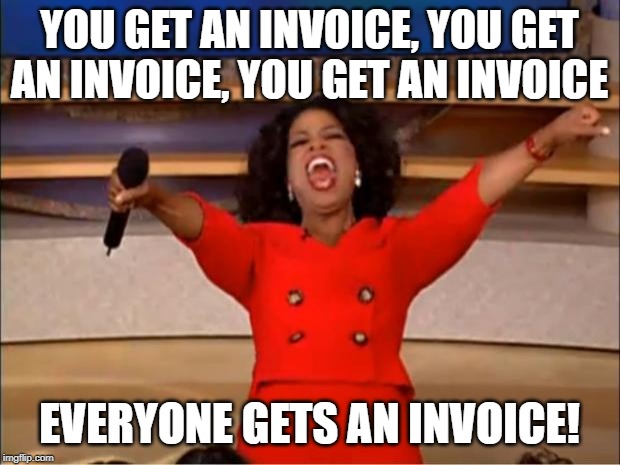Today’s question is about how ad agencies charge their clients.
This is relevant, of course, if you’re an ad agency. You should also find this interesting if you are a business owner who works with an ad agency or might ever work with an ad agency. On the other hand, if you’re a business owner who’s just running your own ads, you’re probably never planning to work with an ad agency.
This question comes from Eden:
“I hope you are well. I have recently come across your podcast. We are a digital marketing company based in the UK, predominantly focusing on social media and Google PPC marketing. My question to you is, in your experience, what is the best way to bill clients for their management fees?
At the moment, we charge a management fee for our service, and then Google CPC charges come straight from the client’s payment card.
However, we are considering the idea of charging clients per lead that we generate them through Google Ads. We would pay for the clicks and not charge them for the management. However, for example, we may charge them £5 for every lead we generate for them. This is only an idea that came out of a brainstorming session. However, I was wondering if you had any other ways that you have heard of, or may have tried in the past for billing clients for Pay Per Click management.
Eden touched on a couple of ways to bill and I’m going to get into some additional ways in this blog.
Flat Fee
Yes, the typical way, I’d say the way that most ad agencies bill for Google campaign management is charging some kind of fee. Some kind of a flat fee or a fee based on the percentage of ad spend. But this would be some kind of a monthly fee, either recurring or invoiced. Percent of ad spend, when I first started taking on clients, that’s how I charged. I would basically manage the account for the month. At the end of the month, I would look at the ad spend and then send an invoice for the percentage that we had determined ahead of time.
I quickly realized that was not the best way to do it.

For one, I didn’t want to keep dealing with invoices. I didn’t want to keep doing the work and then getting paid for it later. And also the goals weren’t necessarily aligned. If you’re charging a percent of ad spend, you know, the client might be wondering if you’re just spending more money because that means you’re going to get paid more, right? Even if that’s not how you’re doing it (and of course, that’s not how I did it, I would always try to get the client the most value for their budget). But it’s not necessarily an alignment of goals. Because if you can bring the client’s ad spend down, then that means your fee would also come down even though you’re doing better work. So just a few reasons, right, I didn’t really like that model and quickly changed to a flat fee model, which is what I’m using for some clients still at this time.
With a flat fee, you’re basically charging the client just a flat amount every month. This can be kind of loosely based on their ad spend. Some agencies do a tiered amount, where they say if your ad spend is between this and this, then our fee would be x. If your ad spend is between this and that, then our fee would be y.
It can also have nothing to do with that spend, and really have more to do with the value that you’re able to bring to the client in terms of the results that you’re getting for them. What I really like about flat fee is you can just bill in advance, you can set up recurring billing. You and the client don’t need to worry about that. As long as they are happy and continuing with your services, they just get billed every month and you continue doing the work.
The other model, which was mentioned in Eden’s question, is a cost per lead.
I have not billed using this model, but I know people who do, and it can definitely work for both the client and the agency. The client knows that they’re getting a certain result. They already know what they’re going to be paying for that result. The agency, if they’re able to run the ads and do a really good job, they could potentially make a lot more. If they’re able to generate the leads at a low cost, and sell them for a bigger margin, there’s definitely an opportunity there to make a good commission (or spread, I don’t know what exactly, you’d call that). But you can you could make quite a bit if you’re able to generate leads for a lot less than what the client is willing to pay for them.
Absolutely, give that model a try. If you think that’s going to work, I would only recommend that if you’re in an industry that you are already very familiar with. It’s going to be really hard to try to do that model with a new client and a new industry. You really don’t know what you’re going to be able to generate leads for. There are also going to be issues of the quality of leads, and really defining what exactly is a lead. So make sure you hash all of that kind of stuff out up front, so that you and the client are on exactly the same page in terms of what a lead is, and what the cost is going to be for that lead. But again, I know there are agencies that use that model and have a lot of success with it.
Another model, and the one that I mainly use aside from the flat fee model, is percent of profit.
The reason I’m able to use this is I have a lot of clients who are selling digital products, and it’s very easy to track the sales that are being generated from the ads that I’m running for them. We can track all of this online. I can see how many sales the client is getting. Not just from what Google Ads is telling, but actually in their sale system. We can tell which other sales came from Google Ads (or usually in my case, YouTube Ads is how I’m generating the leads and the sales for those types of clients.) And then, at the end of the month, we take a look at the ad spend, we take a look at the revenue, we figure out the profit and the client pays me a percent of profit.
Yes, we do have that extra step of having to figure that (profit) out. Having to invoice the client for that. But for me anyway, that the types of clients I’m working with, it has worked out very well. The amount I’m getting paid based on profit is more than I would probably be able to make if I was just charging a flat fee for this.
The goals of me and of the clients are perfectly aligned, we’re both trying to get as much profit as possible.

So it’s a model that’s working for me right now. If you want to try something like that, I’d only recommend it if the client is selling something online, either digital products or eCommerce store (selling physical products) where they can actually track every sale and figure out which sales came from your ads.
There are other results-based models you can use.
I’ve actually had one client where he mainly just wanted leads. With those leads, he had a lot of different types of products to sell them. It wasn’t really going to work to try to calculate the profit because it’s more of a long term play for him. He wants the leads now. But over time, he knows what he’s going to make on those leads.
So in this case, I’m charging him a flat fee per lead. So he’s paying the ad spend, he’s paying per lead from the ads. Every lead that comes in, he just pays me a flat amount per lead that we add up at the end of the month. So results based because he’s paying me based on leads, but to him the lead cost is still variable and he is still paying the ad spend for those leads. And it’s just a matter of knowing how much he wants to pay per lead and working in my fee. Basically, a royalty is one way you could look at that. He’s working my fee into those leads to make sure that it still works for him and for what he wants to pay per lead.
Some other ways that agencies bill is project-based.
Sometimes there’s just a big project, a big campaign. Maybe there’s a timeframe on it. Let’s say, companies wants to run ads for an event they have coming up. So there’s a set start and end to that campaign. You could build for that entire project, just as an example. So maybe the campaign’s going to run for six months, and you would bill the client for that whole six-month timeframe as one amount.
In that example, of course, if it’s an event throughout those six months, there are going to be different levels of budget, different things going on throughout that time. So trying to charge based on a flat monthly fee or some other type of option might not work as well. But charging for an entire project can work In that case, if there’s just one big event or one big kind of campaign that’s being run.
You could also charge CPM, meaning cost-per-thousand impressions.
This method has somehow been inherited from TV and newspapers. This is typically how they are charging. These are the metrics that they’re showing to their clients who are buying and ads in these old school type of media. They’re charging based on thousand impressions. Some clients are used to that, they’re used to paying for ads like that. And they want to pay for ads like that online too.
And you can do this, especially if you’re running display ads or YouTube Ads, it’s pretty easy to know how many impressions the client is getting. Usually, if you’re charging by impression, the results are going to be better, the impact is going to be a lot higher than something like TV or radio or newspaper. So if you can take a client over from something like that into digital ads, and still charge them based on a thousand impressions, that can work very well.
Now, if you’re doing this model, I also recommend actually reporting on the higher value metrics. Of course, an impression isn’t the most valuable metric to look at. So you’re also going to want to let the client know, if you’re running YouTube Ads, you want to let them know how many views, how many clicks, that type of thing. But there are businesses that really just want impressions and don’t necessarily need people to go to their website. If you’re running video ads for a local grocery store, that type of business really doesn’t need people to go to their website, they want people to just see their ads. And eventually, they’ll come into the store. The conversion happens when the person comes into the store.
And then lastly, I’ll mention a hybrid model.
For example, you could charge a low flat fee, but then a percentage of profits. Or you could charge a flat fee and then an additional amount per lead. So you of course, don’t have to be locked into one model here. You can create your own model based on what would work for you and what would work for the client.
So definitely a lot of options. I’m actually kind of teasing this out. Definitely a lot to think about here. I’m looking at possibly making a much longer YouTube video about this topic. So if you know of anything that I missed here, if you know of other ways that you or other people are charging clients, please send me an email and let me know so I can make sure to include that in my more in-depth video. My email is kyle @ adleg . com.
Thank you, Eden, for the question.
